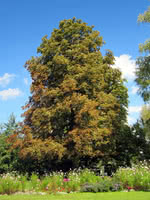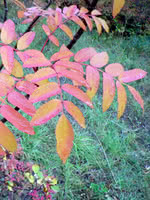Mon-Fri 9am - 5pm Mountain time
Horse Chestnut vs Western Mountain Ash
Aesculus hippocastanum
Sorbus scopulina
CUSTOM GROW
NOT AVAILABLE THIS SEASON - MIGHT RETURN
Horse Chestnut is a medium sized deciduous tree that is native to Greece but has been grown in North America for hundreds of years. It produces large nuts.
A top CO2 absorbing species. Experts think this tree may help climate change more than others.
Western Mountain Ash is a popular ornamental tree native to the western part of North America. Its attractive, white clusters of flowers bloom in early summer, making way for red, yellow or orange fruit in the fall. If the fruit doesn't catch your eye, Western Mountain Ash's autumn colours will capture your–and the birds's–attention.
Horse Chestnut Quick Facts
Western Mountain Ash Quick Facts
Toxicity: most parts of plant are toxic

